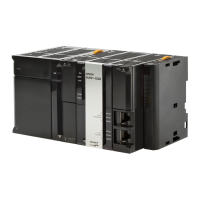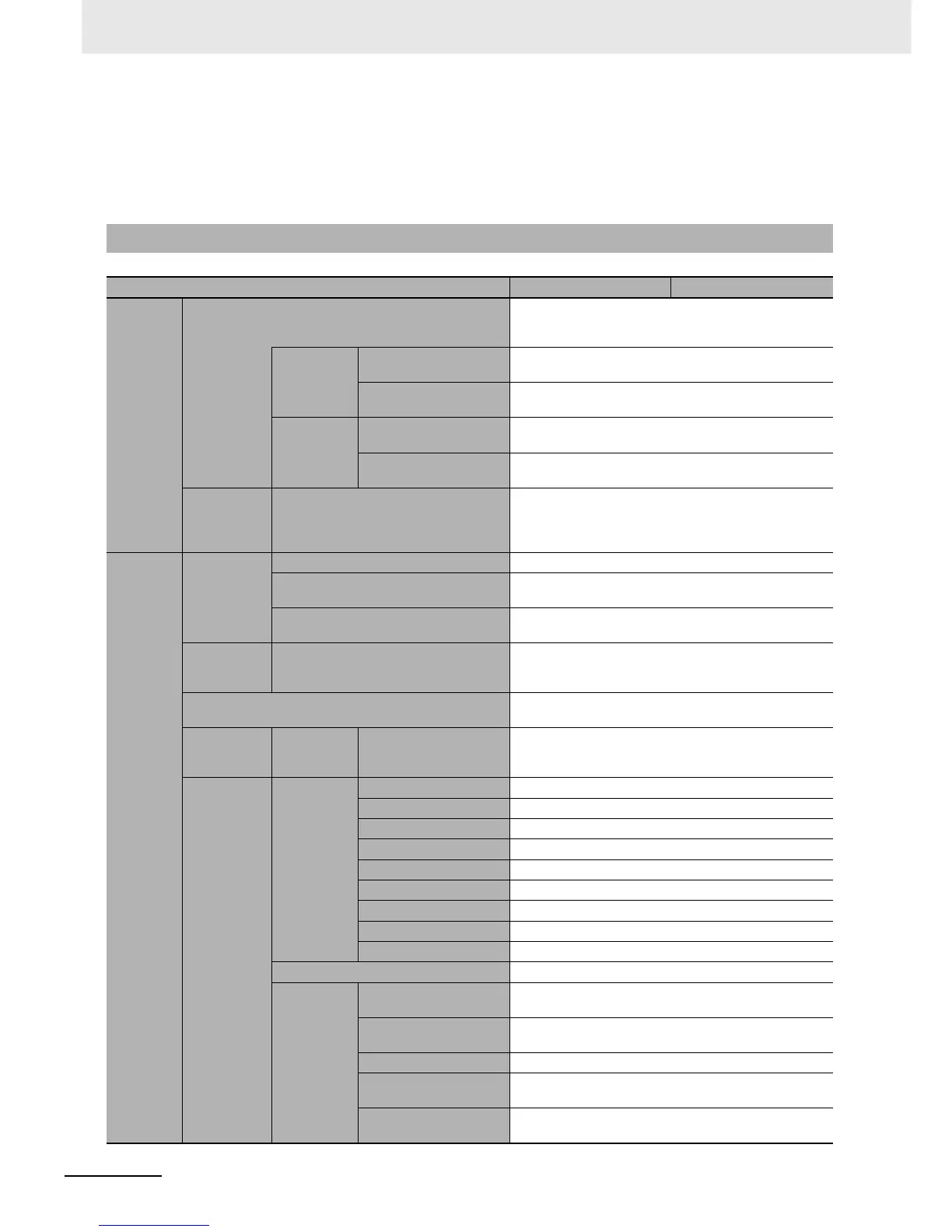Appendices
A-6
NJ-series CPU Unit Software User’s Manual (W501)
*7 “pps” means packets per second, i.e., the number of communications packets that can be sent or received in one second.
*8 As the EtherNet/IP port implements the IGMP client, unnecessary multi-cast packets can be filtered by using an Ethernet switch that
supports IGMP Snooping.
Note Items that are marked with asterisks in the table are improvements that were made during version upgrades. Refer to A-
12 Version Information for information on version upgrades.
A-1-3 Function Specifications
Item NJ501- NJ301-
Tasks
Function
I/O refresh and the user program are executed in units that
are called tasks. Tasks are used to specify execution condi-
tions and execution priority.
Periodically
executed
tasks
Maximum number of pri-
mary periodic tasks
1
Maximum number of
periodic tasks
3
Condition-
ally exe-
cuted tasks
(*)
Maximum number of
event tasks
32
Execution conditions
When Activate Event Task instruction is executed or when
condition expression for variable is met
Setup System Service Monitoring Settings
The execution interval and the percentage of the total user
program execution time are monitored for the system ser-
vices (processes that are executed by the CPU Unit sepa-
rate from task execution).
Program-
ming
POUs (pro-
gram organi-
zation units)
Programs POUs that are assigned to tasks.
Function blocks
POUs that are used to create objects with specific condi-
tions.
Functions
POUs that are used to create an object that determine
unique outputs for the inputs, such as for data processing.
Program-
ming lan-
guages
Types
Ladder diagrams
*1
and structured text (ST)
Namespaces (*)
Namespaces are used to create named groups of POU defi-
nitions.
Variables
External
access of
variables
Network variables
The function which allows access from the HMI, host com-
puters, or other Controllers
Data types
Basic data
types
Boolean BOOL
Bit strings BYTE, WORD, DWORD, and LWORD
Integers INT, SINT, DINT, LINT, UINT, USINT, UDINT, and ULINT
Real numbers REAL and LREAL
Durations TIME
Dates DATE
Times of day TIME_OF_DAY
Dates and times DATE_AND_TIME
Text strings STRING
Derivative data types Structures, Unions, and Enumerations
Structures
Function
A derivative data type that groups together data with differ-
ent data types.
Maximum number of
members
2,048
Nesting maximum levels 8
Member data types
Basic data types, structures, unions, enumerations, or array
variables
Specifying member off-
sets (*)
You can use member offsets to place structure members at
any memory locations.

